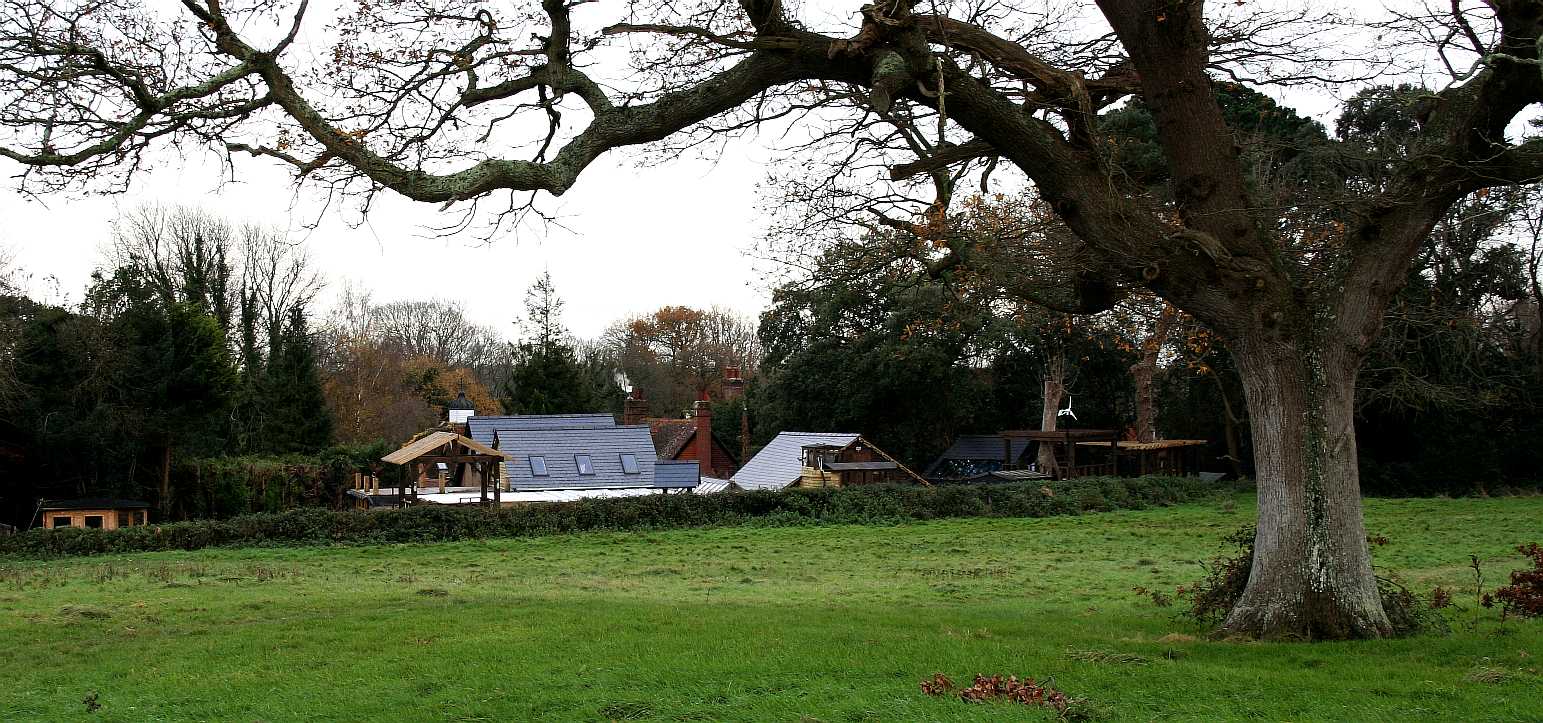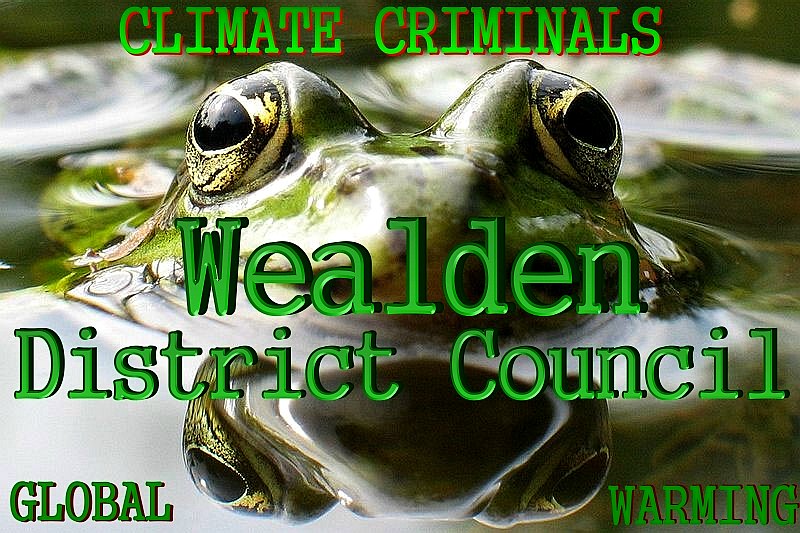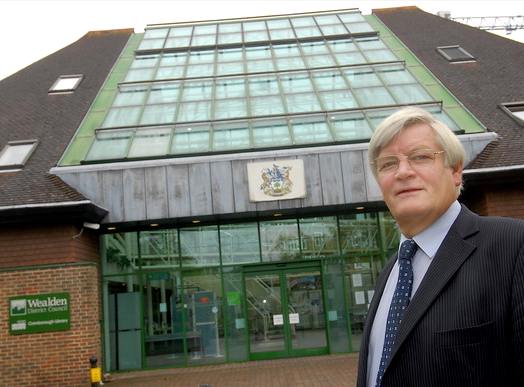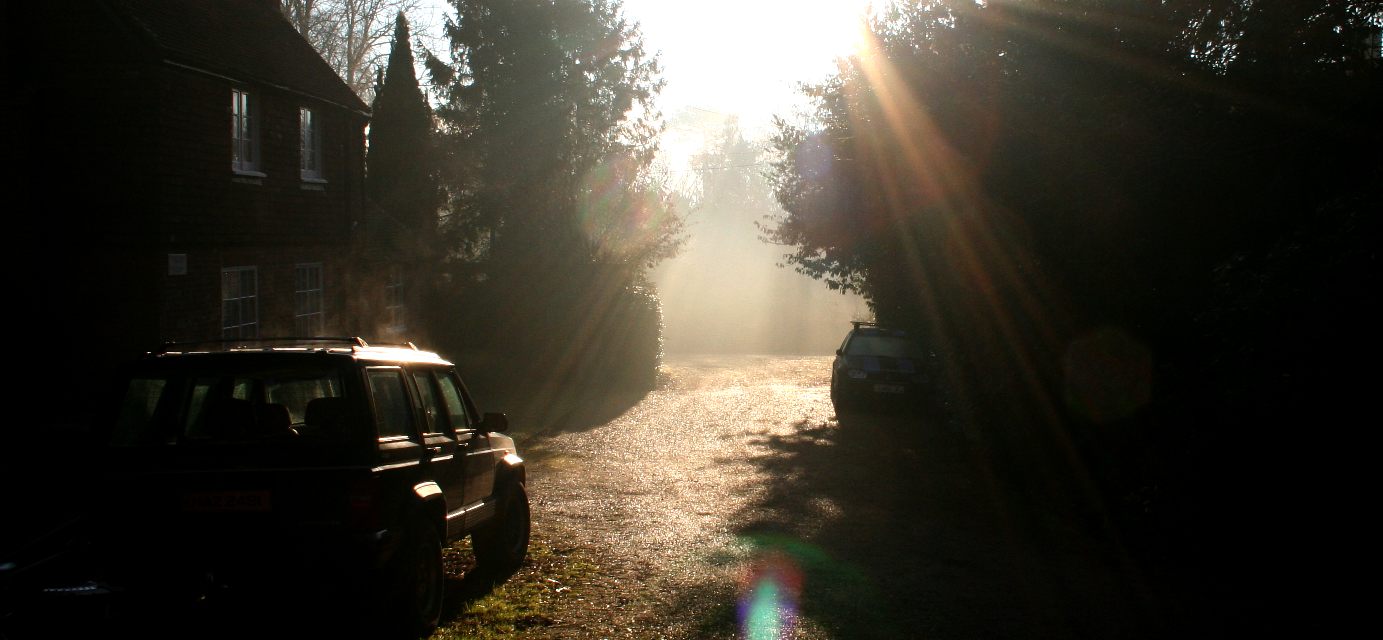|

ZERO
CARBON BUILDINGS - There are not many buildings in England that are
heading towards reducing their carbon
footprint to below 1990 levels. Herstmonceux Museum is one such
building, but the clever planners at Wealden
District Council are doing their best to prevent the Trust and other
contributors from doing just that. If this is an example of local
authority interference - and we have every reason to believe that it is
- then Her Majesty's wishes as in the goals of the Climate Change Act
2008 are not going to be met by 2050 or ever. What a disappointment for
the United
Nations this is going to be.
The
Climate Change and Sustainable Energy Act 2006
2006 CHAPTER 19
An Act to make provision about the reduction of emissions of greenhouse gases, the alleviation of fuel poverty, the promotion of microgeneration and the use of heat produced from renewable sources, compliance with building regulations relating to emissions of greenhouse gases and the use of fuel and power, the renewables obligation relating to the generation and supply of electricity and the adjustment of transmission charges for electricity; and for connected purposes. 9
[21st June 2006]
Be it enacted by the Queen’s most Excellent Majesty, by and with the advice and consent of the Lords Spiritual and Temporal, and Commons, in this present Parliament assembled, and by the authority of the same, as follows:—
Purposes
1
Purposes
(1) The principal purpose of this Act is to enhance the United Kingdom’s contribution to combating climate change.
(2) In performing functions under this Act, the relevant persons and bodies shall have regard to—
(a) the principal purpose set out in subsection (1),
(b) the desirability of alleviating fuel poverty, and
(c) the desirability of securing a diverse and viable long-term energy supply.
(3) In this section “the relevant persons and bodies” means—
(a) the Secretary of State;
(b) any public authority.
Local authorities
3 Local authorities to have regard to information on energy measures in exercising functions
(1)
The Secretary of State—
(a) must, not later than 12 months after this section comes into force, publish an energy measures report, and
(b) may from time to time publish revised energy measures reports.
(2) Every local authority must, in exercising any of their functions, have regard to the most recently published energy measures report (if any).
(3) In this section, “energy measures report” means a document containing information on local authority measures which would or might in the opinion of the Secretary of State have any of the following effects—
(a) improving efficiency in the use of electricity, heat, gas, fuel and other descriptions or sources of energy;
(b) increasing the amount of electricity generated, or heat produced, by microgeneration or otherwise by plant which relies wholly or mainly on low-emissions sources or technologies;
(c) reducing emissions of greenhouse gases;
(d) reducing the number of households in which one or more persons are living in fuel poverty.
(4) In subsection (3)—
“local authority measure” means any way in which a local authority can exercise any of their functions, including—
(a) taking any particular step in the exercise of a function, or
(b)
not exercising a particular power;
“low-emissions source or technology” means a source of energy or a technology mentioned in subsection (2) of section 26.
(5) Before publishing an energy measures report (or a revised energy measures report), the Secretary of State must consult the National Assembly for Wales and—
(a) such representatives of local government, and
(b) such other persons (if any),
as he considers appropriate.
(6 )In this section, “local authority” means any of the following—
(a) a county council;
(b) a county borough council;
(c) a district
council;
(d) a London borough council;
(e) the Common Council of the City of London in their capacity as a local authority;
(f) the Council of the Isles of Scilly;
(g) a parish
council;
(h) a community council.

WEALDEN
DISTRICT COUNCIL - We can only report on what is happening local to
us. You will need to see if your local authority are acting for the
common good, or if they are doing the same as our climate dimwits in
Sussex. This is as of January 2019. We hope that by 2020 we can say that
our climate fools have either been on a climate awareness course, or
that planning-speeding has been outlawed - preferably by statute.
Because we all know that if there is a loophole or any gray area at all,
this council will use it to make another fast buck.
Microgeneration
4
National targets for microgeneration
(1)
The Secretary of State must, during the period beginning with 1st November 2008 and ending with 31st March 2009—
(a) designate one or more national microgeneration targets, and
(b) publish a statement of that fact together with a copy of the target or targets.
(2) But subsection (1) does not apply unless on 1st November 2008 the Secretary of State considers that it would be appropriate to designate one or more targets under that subsection.
(3) For the purposes of this section, a national microgeneration target is a target in respect of—
(a) the number of microgeneration systems installed in England and Wales, and
(b) the number of electricity microgenerating systems installed in Scotland,
as at a date specified in the target (“the target date”).
(4) The matters to which the Secretary of State must have regard in determining whether subsection (1) applies include, in particular—
(a) the number of microgeneration systems installed in England and Wales,
(b) the number of electricity microgenerating systems installed in Scotland,
(c) the strategy published under section 82 of the Energy Act 2004 (c. 20) (microgeneration), and
(d) the results of any research carried out into the effect that designating a target under subsection (1) could be expected to have on the number of microgeneration systems that are installed in England and Wales, and the number of electricity microgenerating systems that are installed in Scotland, by the target date.
(5) If a target is designated under subsection (1), the Secretary of State must take reasonable steps to secure that the target is met.
(6) If the Secretary of State does not designate a target under subsection (1) he shall publish forthwith a statement of his reasons.
(7) At any time before the target date, the Secretary of State may review a target and, if he considers it appropriate to do so, revise the target.
(8) If under subsection (7) the Secretary of State revises a target—
(a) he must publish a statement of that fact together with a copy of the revised target, and
(b) the revised target is treated for the purposes of subsection (5) and section 5 as a target designated under subsection (1) (in place of the target which has been revised).
(9 )In this section—
“electricity microgenerating system” means a microgeneration system for generating electricity;
“microgeneration system” means any plant or system of plant for generating electricity or producing heat—
(a)
which, in generating electricity or (as the case may be) producing heat, relies wholly or mainly on a source of energy or a technology mentioned in subsection (7) of section 82 of the Energy Act 2004 (c. 20), and
(b) whose capacity to generate electricity or (as the case may be) to produce heat does not exceed the capacity mentioned in subsection (8) of that section;
“plant” includes any equipment, apparatus or appliance.
5
National microgeneration targets: modification of section 1 of the Sustainable Energy Act 2003
(1) This section applies if a target is designated under section 4.
(2) Section 1 of the Sustainable Energy Act 2003 (c. 30) (annual reports on progress towards sustainable energy aims) applies in relation to every relevant sustainable energy report as if after subsection (1B) there were inserted—
“(1BA) The report must also include such information as the Secretary of State considers appropriate about things done during the reporting period for the purpose of meeting any target designated under section 4 of the Climate Change and Sustainable Energy Act 2006 (national targets for microgeneration).”,
and as if, in subsection (1C), for “subsection (1A)” there were substituted “subsections (1A) and (1BA)”.
(3) For the purposes of this section—
(a) a sustainable energy report is a relevant sustainable energy report in relation to a target designated under subsection (1) of section 4 if the reporting period to which the report relates includes the period, or any part of the period, to which the target relates,
(b) a target designated under subsection (1) of that section relates to the period beginning when it is designated and ending with the target date (within the meaning of that section),
(c) “reporting period”, in relation to a sustainable energy report, has the meaning given by section 1 of the Sustainable Energy Act 2003, and
(d) “sustainable energy report” means a sustainable energy report which is required to be published under that section.
10 Review of permitted development orders
(1) The Secretary of State shall for the purpose mentioned in subsection (2) carry out a review of the effect in England of development orders made by virtue of section 59(2)(a) of the Town and Country Planning Act 1990 (c. 8) (which confers power by order to grant planning permission for development or a class of development specified in the order).
(2) The purpose of the review is to enable the Secretary of State to form a view as to what provision (or further provision) such development orders should make to facilitate development in England consisting of the installation, within the curtilage of a dwellinghouse, of equipment, apparatus or appliances for microgeneration.
(3) As soon as reasonably practicable after he has carried out the review, the Secretary of State must lay before Parliament a report of the review, including his view as mentioned in subsection (2) and the reasons for it.
(4) The report must also set out what provision (or further provision), if any, the Secretary of State proposes to make in development orders by virtue of section 59(2)(a) of the Town and Country Planning Act 1990 in consequence of the review.
(5) Where the Secretary of State proposes to make provision (or further provision) in development orders in consequence of the review, he must—
(a) exercise his powers under section 59 of the Town and Country Planning Act 1990 so as to provide that development orders made by virtue of that section make such provision in consequence of the review as he considers appropriate, and
(b) exercise those powers as soon as reasonably practicable after laying the report before Parliament under subsection (3).
(6) In this section—
“dwellinghouse” does not include a building containing one or more flats, or a flat contained within such a building;
“flat” means a separate and self-contained set of premises constructed or adapted for use for the purpose of a dwelling and forming part of a building from some other part of which it is divided horizontally.
11
Building regulations: microgeneration
In Schedule 1 to the Building Act 1984 (c. 55) (building regulations), in paragraph 7(a), after paragraph (xxiid) insert—
“(xxiie)the production of heat or the generation of electricity by microgeneration (as defined for the purposes of this paragraph by building regulations),”.
20 Parish councils and community councils: powers in relation to local energy saving measures
(1) A parish council or community council may encourage or promote any of the following—
(a) microgeneration within their area;
(b) the use within their area of electricity generated, or heat produced, by microgeneration;
(c) efficiency in the use, by persons in their area, of electricity, heat, gas, fuel and other descriptions or sources of energy;
(d) reductions in the amounts of such energy, or sources of energy, used by persons in their area;
(e) production in their area of—
(i) biomass, or
(ii) any fuel derived from biomass;
(f) use in their area of, or of electricity generated, or heat produced, from biomass or any such fuel.
21 Renewable heat
(1) It shall be the duty of the Secretary of State to take such steps as he considers appropriate to promote the use of heat produced from renewable sources.
(2) For the purposes of subsection (1), heat produced by any plant is produced from renewable sources to the extent that the plant is fuelled by renewable sources.
(3) The steps which the Secretary of State may take for the purposes of subsection (1) include, in particular, steps for the purpose of promoting—
(a) the installation of plant which is or may be fuelled by renewable sources,
(b) the adaptation of plant so as to enable it to be fuelled by renewable sources, or
(c) the production of heat by plant which is fuelled partly by renewable sources and partly by other sources.

IS
HE OUT OF TOUCH & THANKFULLY REPLACED -
Councillor Robert Standley is still the Leader of Wealden District
Council - a council that appears not to take climate
change seriously, let alone their responsibilities under the 2008
Act. Many are now saying that after (probably) too many years in office
that members become jaded and out of touch with what is required for the sustainable future of
Wealden residents.
Under
the lead of Bob Standley, as he prefers to be called, Wealden have
adopted an enforcement led approach, rather than a more helpful
negotiation first approach. Such tactics are not sympathetic to a
circular economy, where most planning matters can be resolved by talking
about ways that compliance might be achieved. The problem here is that
negotiation is far removed from alternative agendas, such as trying to
hide past mistakes. We think that new leadership is long overdue. Do you
have confidence in your council? Perhaps Robert should think about his
management team. Replacing non-performers might be a good start and
something for this councillor's successor to consider when aiming for
sustainability.
Microgeneration technologies are seen as having considerable potential by the Government. Microgeneration involves the local production of electricity by homes and businesses from low-energy sources including small scale wind turbines, ground source heat pumps and solar electricity installations.
The Government's own microgeneration strategy was launched in March 2006 was seen as a disappointment by many commentators. In contrast, the Climate Change and Sustainable Energy Act has been viewed as a positive step.
Councils
are bound by the tenets of the Climate Change and Sustainable Energy Act
2006 and the Climate Change Act 2008 to reduce
greenhouse gas emissions to 1990 levels. Our Government has given all
local authorities until 2050 to achieve that goal and do their part. Fat
chance.
The
problem here is that planning departments do not really understand the
physics sufficiently to know what they are looking at - never mind being
creative enough to find innovative ways to bring about the reductions in
their area (pro-rata) that Whitehall have set down as a statutory
requirement.

A
BRIGHT FUTURE - The sun rises over Lime Park in January of 2017.
Frost on the Jeep in the foreground is vaporized, causing the roof of
the vehicle to steam.
UNITED
NATIONS FRAMEWORK ON CLIMATE CHANGE (UNFCCC)
The UNFCCC was created in 1992 as the main forum for international action on climate change. Its overall aim is to:
“achieve… stabilization of greenhouse gas concentrations in the atmosphere at a level that would prevent dangerous anthropogenic interference with the climate system. Such a level should be achieved within a time frame sufficient to allow ecosystems to adapt naturally to
climate
change, to ensure food production is not threatened and to enable economic development to proceed in a sustainable manner.”
195 countries have joined the international agreement (known as a convention). Negotiations focus on four key areas:
* mitigating (reducing)
greenhouse gas emissions
* adapting to climate change
* reporting of national emissions
* financing of climate action in developing countries
THE
KYOTO PROTOCOL
UNFCCC negotiations led to the Kyoto Protocol in 1997. The Kyoto Protocol set a target for 37 industrialised countries to reduce their emissions by an average 5% below 1990 levels, for the period of 2008 to 2012. As part of this group the UK committed to a 12.5% reduction in greenhouse gas emissions.
The targets were met successfully. Overall, the 37 countries reduced global emissions by over 10%. But this was not enough to offset the increasing emissions from other industrialising countries (such as China), meaning total global emissions grew over the period.
A second Kyoto commitment period has been agreed from 2013 to 2020. Fewer countries have signed the second commitment agreement, although the UK and the
EU are participating.
THE
PARIS AGREEMENT
Continuing UNFCCC negotiations led to the
Paris Agreement in December
2015.
The Paris Agreement is the first truly global effort to reduce emissions. To date, 160 UNFCCC parties have made voluntary pledges to reduce emissions up to 2030, including China, the US and the European Union (on behalf of the UK and other EU nations).
The main aim of the Paris Agreement is to hold the increase in global average temperature to well below 2°C above pre-industrial levels and to pursue efforts to limit
warming to 1.5°C.
Overall, the current pledges would lead to lower global emissions compared to previous expectations. But further action will be required to keep warming to below 2°C or 1.5°C.
Recognising this gap in ambition, the Paris Agreement schedules a review of pledges in 2018 so that countries can tighten them where possible. There will be another review in 2023 and further reviews every five years after that.
PREPARING
FOR CLIMATE CHANGE
The UNFCCC commits all signatory nations to formulate, implement, publish and update measures to prepare for the impacts of climate change, known as ‘adaptation’. It also commits countries to cooperate on adaptation and provides a variety of support mechanisms for the implementation of adaptation measures in developing countries.
In 2010, the Cancun Adaptation Framework was adopted, and it was agreed that adaptation must be given the same priority as mitigation. The framework calls for further action on adaptation including reducing vulnerability and increasing resilience to climate change in developing countries.
The
Paris Agreement also places significant emphasis on the need for adaptation action around the world.
HERITAGE
INDEX A - Z
BARCLAYS
BANKING LET DOWN - MISSING ACCOUNT MONEY
BARON
CARL VON ROEMER
CHURCH
- MULTI-FAITH PLACE OF WORSHIP
EAST
SUSSEX COUNTY COUNCIL -
ENGLISH
HERITAGE
FILM
PRODUCTION - LOCATIONS & SETS
JOHN
HOPKINSON -
CAMPBELL
HALL - BLUEBIRD ELECTRIC CARS - BE1
- BE2 -
BE3 - BE4
CLIMATE
CHANGE - ACT 2008 -
SUSTAINABLE ENERGY 2006
GAS
ENGINES - COAL CONVERSION, INTERNAL COMBUSTION
HERITAGE
LOTTERY FUND
HISTORIC
ENGLAND
HX
FIRE STATION
HX
MUSEUM - LTD
HX
SCIENCE EXHIBITS MUSEUM
OBSERVATORY
- HERSTMONCEUX CASTLE
SX
MUSEUMS
PERGOLA
- MOUNT FOR SOLAR PANELS
PLANNING
APP JAN 2015
RAF
BEACHY HEAD
RAF
HERSTMONCEUX
RAF
HERSTMONCEUX & WARTLING
RAF
SEAFORD BAY
SOLAR
LADY - STATUE
SUMMER
SOLSTICE
SUSSEX
TRUGGERY
THOMAS
ALVA EDISON
TIME
CAPSULE
TOURISM
DCMS
TREE
HOUSES -
TREE
PRESERVATION
TRUGS
VIRTUAL
TOUR
WEALDEN
DISTRICT COUNCIL
WORLD
ELECTRIFICATION HISTORY
WWII
AIR RAID SHELTER
LINKS
& REFERENCE
https://en.wikipedia.org/wiki/Climate_Change_and_Sustainable_Energy_Act_2006
http://www.legislation.gov.uk/ukpga/2006/19/enacted
https://www.theccc.org.uk/tackling-climate-change/the-legal-landscape/global-action-on-climate-change/

|



